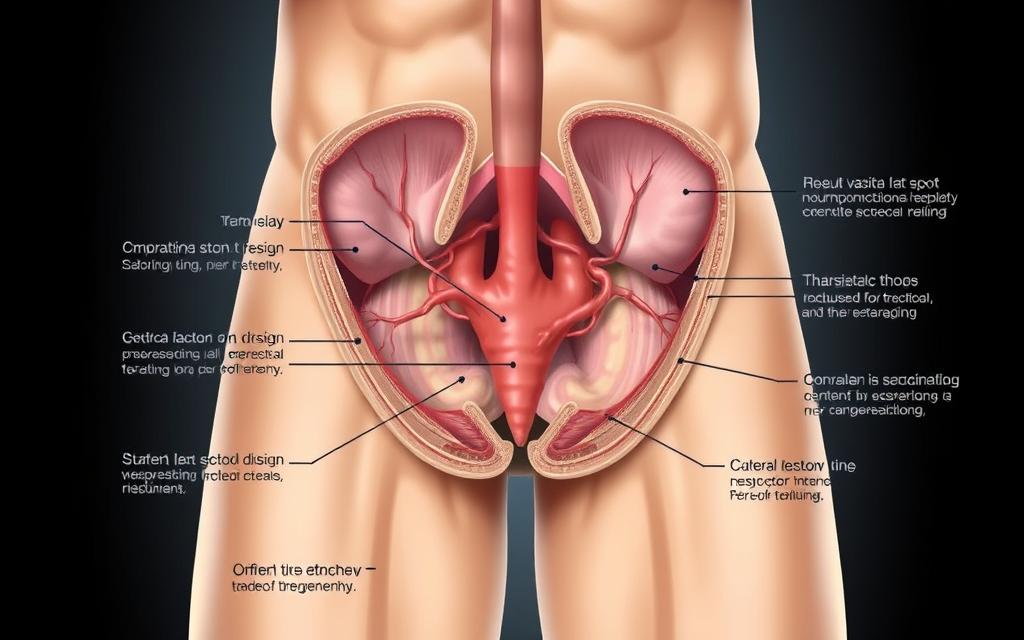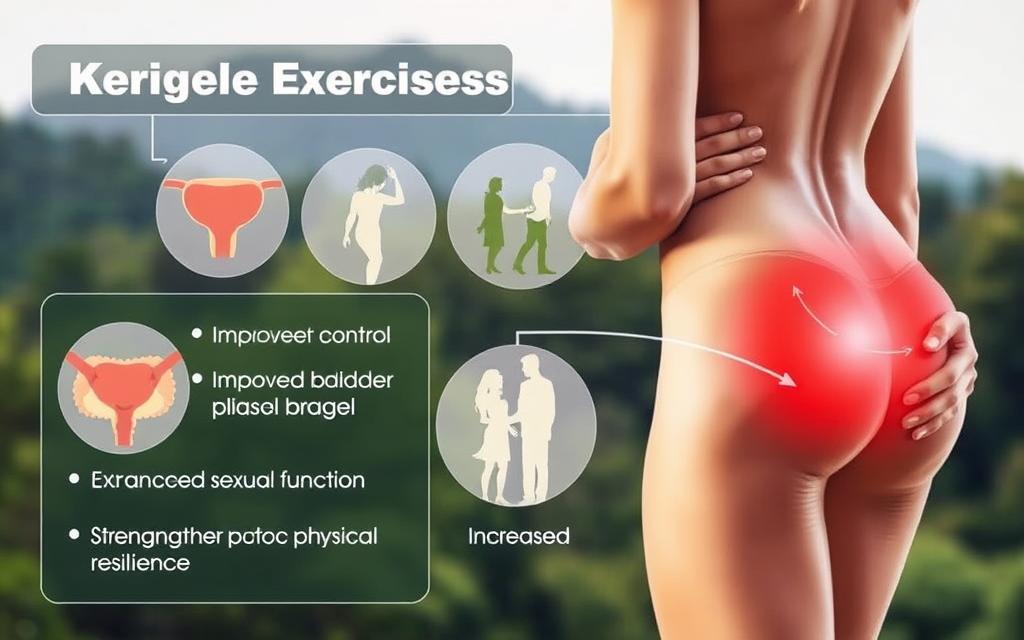Do Kegel Exercises Help with Erectile Dysfunction? Benefits and Insights
Kegel exercises are often associated with women’s health, particularly in the postpartum period. However, they also offer significant benefits for men’s sexual health. By strengthening the pelvic floor muscles, Kegel exercises can improve bladder control and enhance sexual performance.
Erectile dysfunction is a common issue affecting many men worldwide. While various treatments are available, incorporating Kegel exercises into one’s daily routine can be a simple yet effective approach to improving erectile dysfunction treatment outcomes. By enhancing blood flow and strengthening the muscles that support sexual function, Kegel exercises contribute to overall sexual health.
This article will explore the benefits and insights into how Kegel exercises can help men dealing with erectile dysfunction, providing a comprehensive overview of this straightforward yet impactful practice.
Understanding Erectile Dysfunction and Its Causes
Erectile dysfunction (ED) is a condition that affects millions of men worldwide, causing significant distress and impacting quality of life. To effectively address ED, it’s essential to understand its underlying causes and how they impact sexual function.
What Is Erectile Dysfunction?
Erectile dysfunction is characterized by the inability to achieve or maintain an erection sufficient for satisfactory sexual performance. It’s a condition that can stem from a variety of factors, including physical, psychological, or a combination of both.
Common Physical Causes of ED
Physical causes of ED include cardiovascular disease, diabetes, obesity, and neurological disorders. These conditions can damage blood vessels and nerves, impairing erectile function. For instance, a study on erectile dysfunction and Kegel exercises highlights the importance of addressing underlying health issues.

Psychological Factors Contributing to ED
Psychological factors, such as stress, anxiety, and depression, can also play a significant role in ED. These factors can lead to increased tension and make it difficult to achieve or maintain an erection.
The Role of Pelvic Floor Muscles in Sexual Function
The pelvic floor muscles are crucial for sexual function, supporting erectile function and ejaculation. Weakness or dysfunction in these muscles can contribute to ED, making exercises that strengthen them, like Kegel exercises, potentially beneficial.
Understanding the multifaceted nature of ED is key to addressing it effectively. By recognizing both the physical and psychological causes, individuals can seek appropriate treatments, including lifestyle changes and targeted exercises.
Deep Sitting for Erectile Dysfunction: What Science Says
The relationship between Kegel exercises and erectile dysfunction (ED) has garnered significant attention in recent years due to its potential therapeutic benefits. While the term “deep sitting” isn’t commonly associated with ED treatment, Kegel exercises, which involve strengthening the pelvic floor muscles, have been increasingly recognized for their role in improving erectile function.
The Science Behind Kegel Exercises
Kegel exercises work by strengthening the pelvic floor muscles, which are crucial for supporting erectile function. These muscles play a key role in achieving and maintaining an erection. By enhancing the strength and endurance of these muscles, individuals can potentially improve their erectile function.
Research Studies and Clinical Evidence
Numerous studies have investigated the effectiveness of Kegel exercises in treating erectile dysfunction. A study published in the Journal of Urology found that men who performed pelvic floor exercises experienced significant improvements in erectile function. Another study highlighted the benefits of combining Kegel exercises with other lifestyle modifications for enhanced results.
Clinical evidence supports the use of Kegel exercises as a complementary therapy for ED. Research indicates that these exercises can improve blood flow to the penis, enhance muscle strength, and boost overall sexual function.
Success Rates and Timeframes for Improvement
The success rates and timeframes for improvement vary among individuals. A systematic review of studies on pelvic floor muscle training for ED reported that participants experienced noticeable improvements within 3 to 6 months of consistent exercise. However, individual results can vary based on factors such as the severity of ED, exercise consistency, and overall health.
| Study Duration | Improvement in Erectile Function | Participant Compliance |
|---|---|---|
| 3 months | Moderate | 80% |
| 6 months | Significant | 75% |
Expert Opinions on Pelvic Floor Training
Experts in urology and sexual health agree that pelvic floor training, including Kegel exercises, can be a valuable component of ED management. They emphasize the importance of proper technique, consistent practice, and patience. Some experts also recommend combining Kegel exercises with other lifestyle changes, such as diet and exercise, for optimal results.
By understanding the scientific basis and clinical evidence supporting Kegel exercises for ED, individuals can make informed decisions about incorporating these exercises into their treatment plan.
How to Properly Perform Kegel Exercises
To get the most out of Kegel exercises, it’s crucial to understand the proper technique. Kegel exercises are a powerful tool for strengthening the pelvic floor muscles, which play a significant role in sexual function and overall urinary health. By mastering the correct method, individuals can maximize the Kegel exercises benefits and improve their condition.
Identifying Your Pelvic Floor Muscles
The first step in performing Kegel exercises is identifying the pelvic floor muscles. These muscles are responsible for stopping the flow of urine and are engaged during sexual intercourse. To identify them, try stopping your urine flow midstream; the muscles you use are your pelvic floor muscles. It’s essential to note that this method is only for identification and not a regular practice, as frequently stopping urine flow can lead to other issues.
Step-by-Step Guide to Basic Kegel Exercises
Once you’ve identified your pelvic floor muscles, you can start with basic Kegel exercises. Here’s a simple step-by-step guide:
- Find a comfortable position, either lying down, sitting, or standing.
- Tighten your pelvic floor muscles as you did when identifying them.
- Hold the contraction for 5 seconds.
- Release the muscles for 5 seconds.
- Repeat this cycle 10 times.

Advanced Kegel Techniques
As you become more comfortable with basic Kegel exercises, you can progress to advanced techniques. These involve longer contractions, more repetitions, or varying the speed of contractions. For example, you can try holding the contraction for 10 seconds or performing ‘quick flicks’ where you rapidly contract and release the muscles.
Common Mistakes to Avoid
One of the most common mistakes is engaging the wrong muscles. Ensure you’re not tensing your abdomen, thighs, or buttocks. Another mistake is not breathing naturally while performing Kegels; you should breathe freely. For more detailed guidance, you can visit Colorado Urologists for professional advice.
Creating an Effective Exercise Routine
Consistency is key when it comes to Kegel exercises. To create an effective exercise routine, consider the following:
Recommended Frequency and Duration
Aim to perform Kegel exercises 3 times a day. Start with 10 repetitions and gradually increase to 20 or more as your pelvic floor muscles strengthen.
Tracking Your Progress
Keep a log or use a mobile app to track your progress. Noting improvements or challenges can help you adjust your routine for better results. Regular tracking also motivates you to stick to your exercise routine.
By following these guidelines and being consistent, you can harness the full potential of Kegel exercises to improve your condition and overall pelvic health.
Combining Kegel Exercises with Other ED Treatments
Erectile dysfunction treatment can be enhanced by incorporating Kegel exercises with lifestyle changes and complementary therapies. This multi-faceted approach can lead to more effective management of the condition.
Lifestyle Modifications to Enhance Results
Making certain lifestyle modifications can significantly enhance the effectiveness of Kegel exercises in treating erectile dysfunction. Regular exercise, a balanced diet, and stress management are crucial elements. Exercise improves cardiovascular health, which is linked to erectile function. A diet rich in fruits, vegetables, and whole grains supports overall vascular health. Stress management techniques, such as meditation or yoga, can also help alleviate psychological factors contributing to erectile dysfunction.
Quitting smoking and reducing alcohol consumption are also recommended, as both smoking and excessive alcohol intake can negatively impact erectile function. By combining these lifestyle changes with Kegel exercises, individuals can potentially achieve better outcomes in managing erectile dysfunction.
Complementary Therapies and Approaches
In addition to lifestyle modifications, various complementary therapies can be used alongside Kegel exercises to enhance erectile dysfunction treatment. Acupuncture, herbal supplements, and cognitive behavioral therapy are some of the approaches that have been explored. While the evidence is mixed, some individuals report benefits from these therapies.
It’s essential to consult with a healthcare provider before starting any complementary therapy to ensure safety and avoid potential interactions with other treatments.
When to Consult a Healthcare Provider
Individuals experiencing erectile dysfunction should consult a healthcare provider to discuss the most appropriate treatment plan. A healthcare professional can help determine the underlying causes of erectile dysfunction and recommend a comprehensive treatment strategy that may include Kegel exercises, lifestyle modifications, and other interventions.
Realistic Expectations and Limitations
While combining Kegel exercises with other treatments can be beneficial, it’s essential to have realistic expectations. The effectiveness of this approach can vary depending on the individual and the underlying causes of their erectile dysfunction. Understanding the potential benefits and limitations can help individuals make informed decisions about their treatment.
Conclusion: Taking Control of Your Sexual Health
By incorporating Kegel exercises and other lifestyle changes, individuals can take a proactive approach to improving their sexual health and addressing erectile dysfunction.
Regular pelvic floor exercises, such as Kegels, can strengthen the muscles that support erections, leading to improved erectile function and overall well-being. Combining these exercises with aerobic exercise, strength training, and stress management can have a significant impact on one’s quality of life.
By making informed choices and taking control of their sexual health, individuals can experience the Kegel exercises benefits, including enhanced erectile function, increased confidence, and a stronger connection with their partner.
By adopting a holistic approach to health and wellness, individuals can achieve optimal results and enjoy a more fulfilling life.
